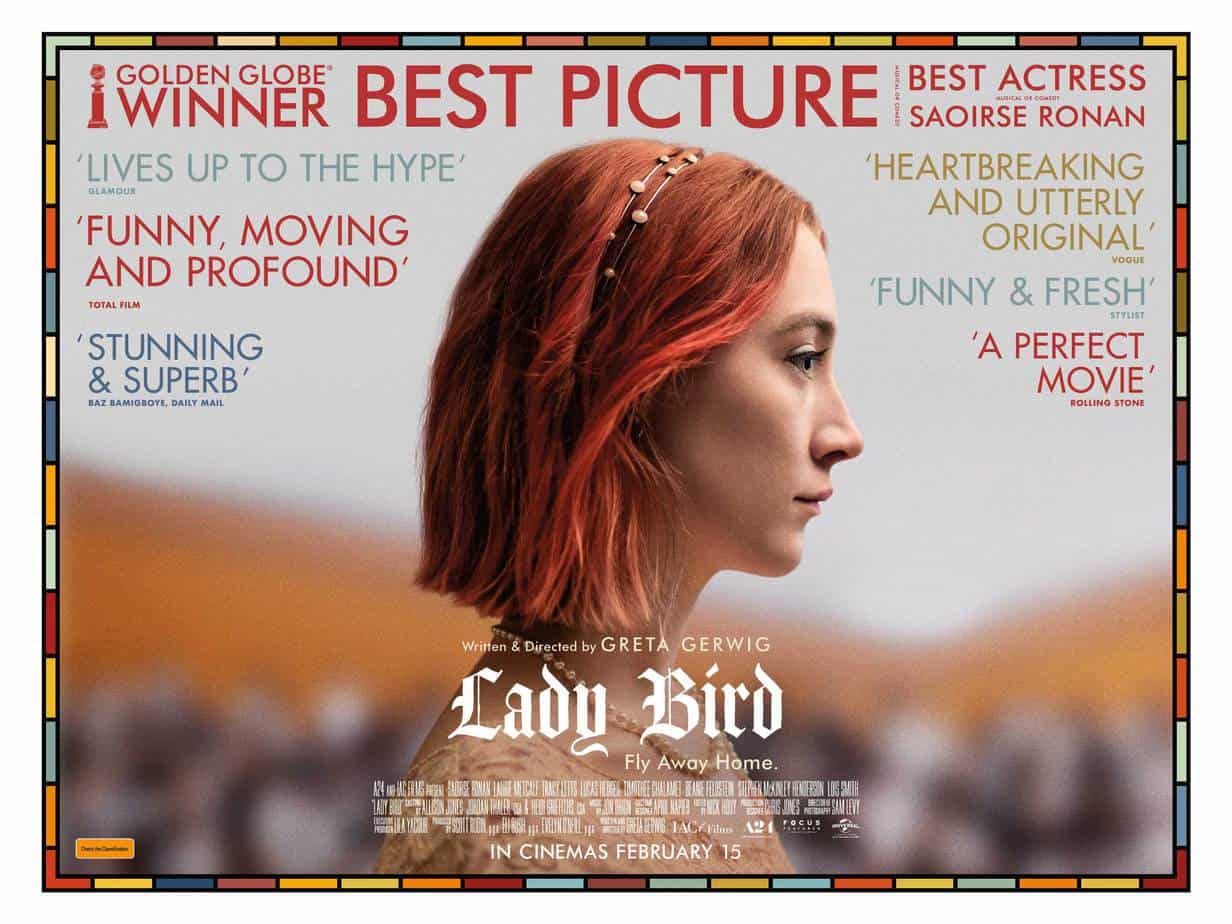Lady Bird is an American coming-of-age film written and directed by Greta Gerwig, who won a bunch of awards for it. I can see why.
A similar film, but underrated, is The Edge Of Seventeen. If you loved Lady Bird, watch The Edge Of Seventeen. Also, if you like Lady Bird, you like young adult fiction. Lady Bird may not feel like a YA story because this is also a story about a mother who is learning to let go. In this respect I liken it to Richard Linklater’s Boyhood.
Another film considered just as good as Lady Bird, but about a black, gay man is Moonlight. Here’s why we should be paying attention to that film, too.
By the way, there’s an extension for Chrome and Firefox with alows you to stream films with screenplays side-by-side, in sync. Lady Bird is one of the featured films on ScreenplaySubs.
SETTING OF LADY BIRD
Though set in 2002, Lady Bird is considered a ‘period piece’. 9/11 was a year ago, and this influences American culture at the time. The character Lady Bird is drawn to New York, not despite the bombings, but possibly because she’s drawn to excitement (naively).
The story is not autobiographical, but Sacramento was chosen because Gerwig knows this area so well, having grown up here and attending a Catholic girls’ school. The significant thing about this setting: It is not New York. A young woman like Lady Bird feels like nothing important happens here. This story could equally have been set in the Midwest, or in the American South.
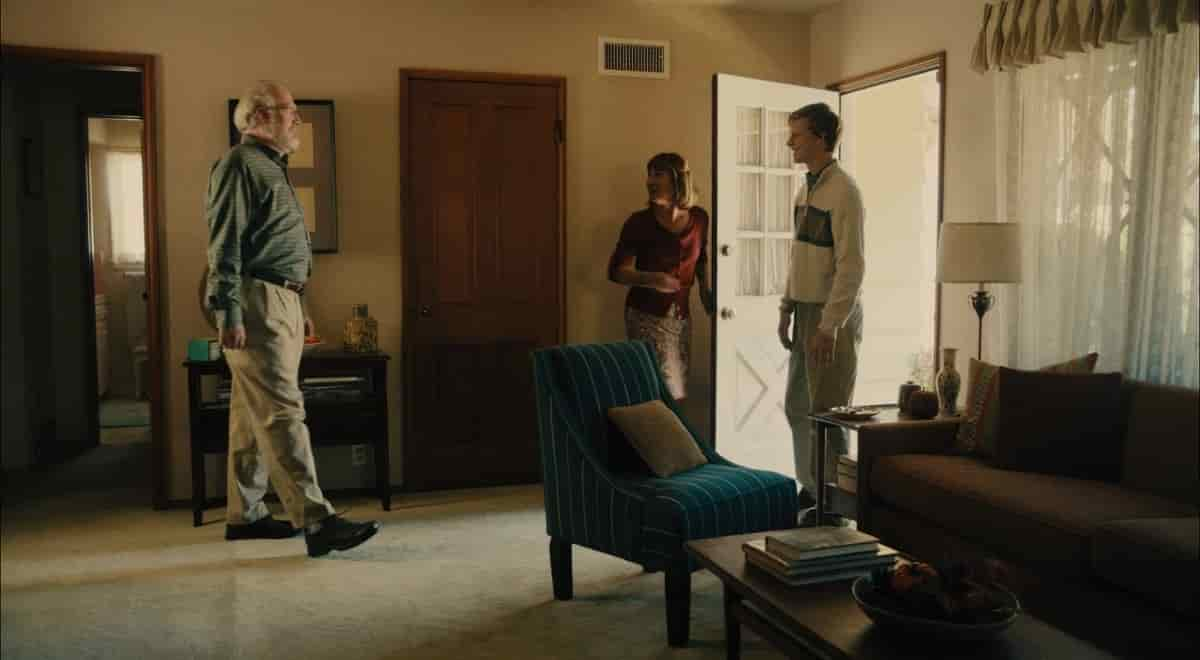
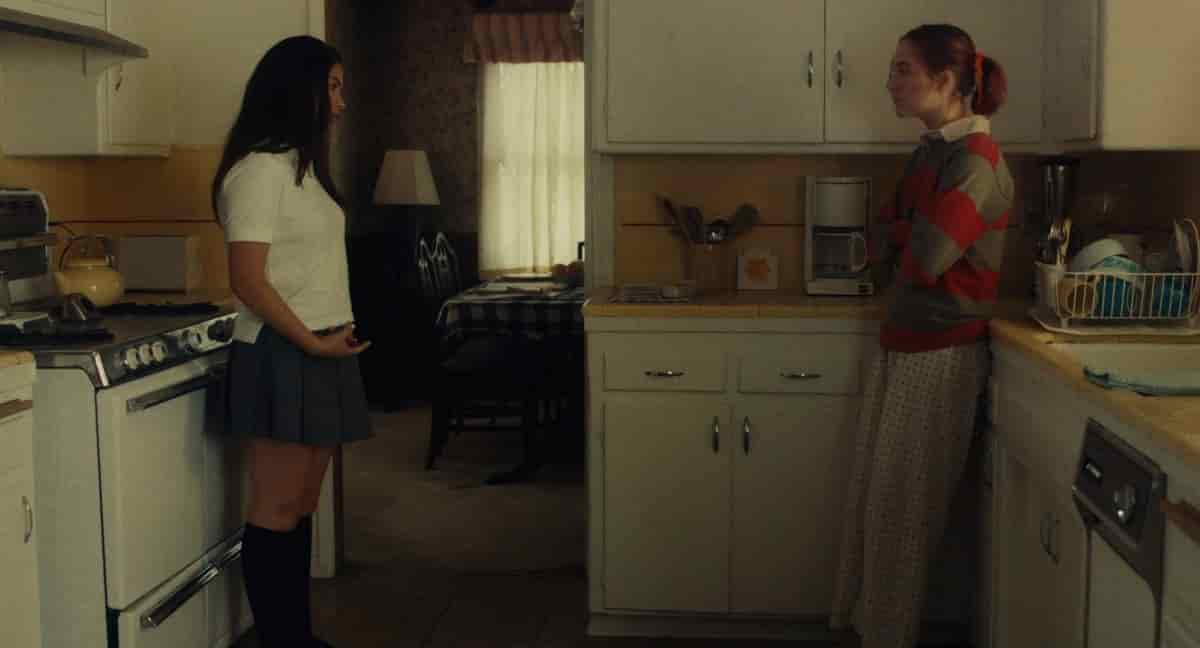
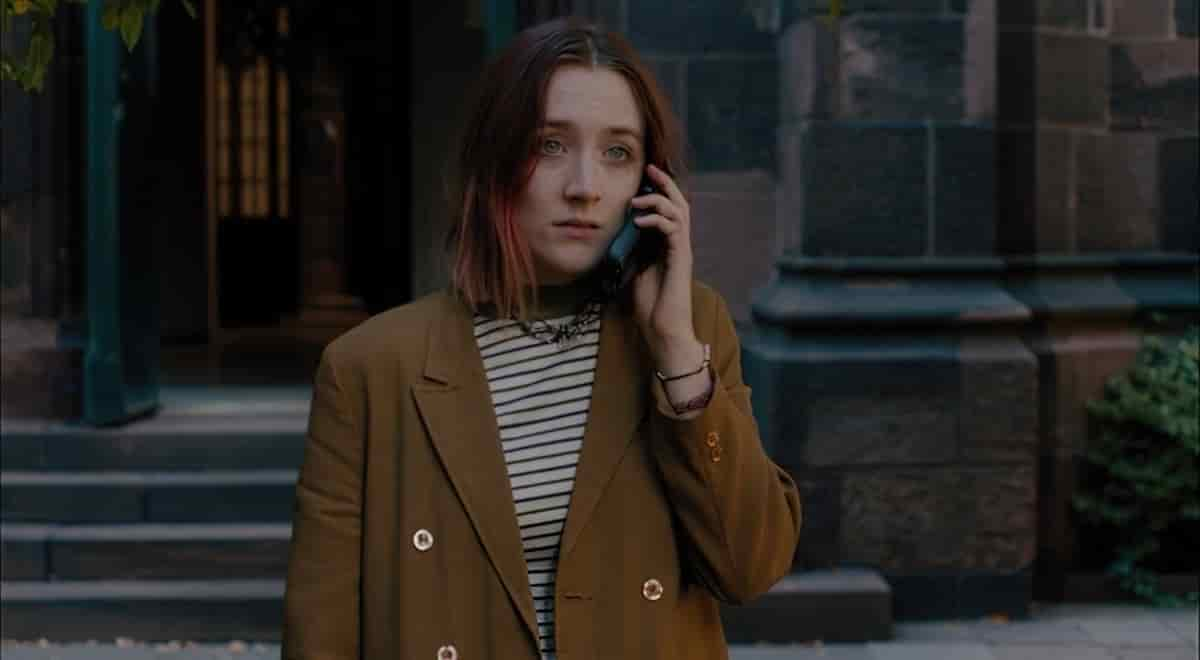
PLOT OF LADY BIRD
As Steven Colbert says in his interview with Saoirse Ronan, you can tell someone the entire plot of this film and still not ruin it, because this is very much a character driven story. When listed, there’s nothing in this plot which stands out as spectacle, or ‘original’. The brilliance of this story is in the emotional impact, which is created by well-drawn, relatable characters and focus on details.
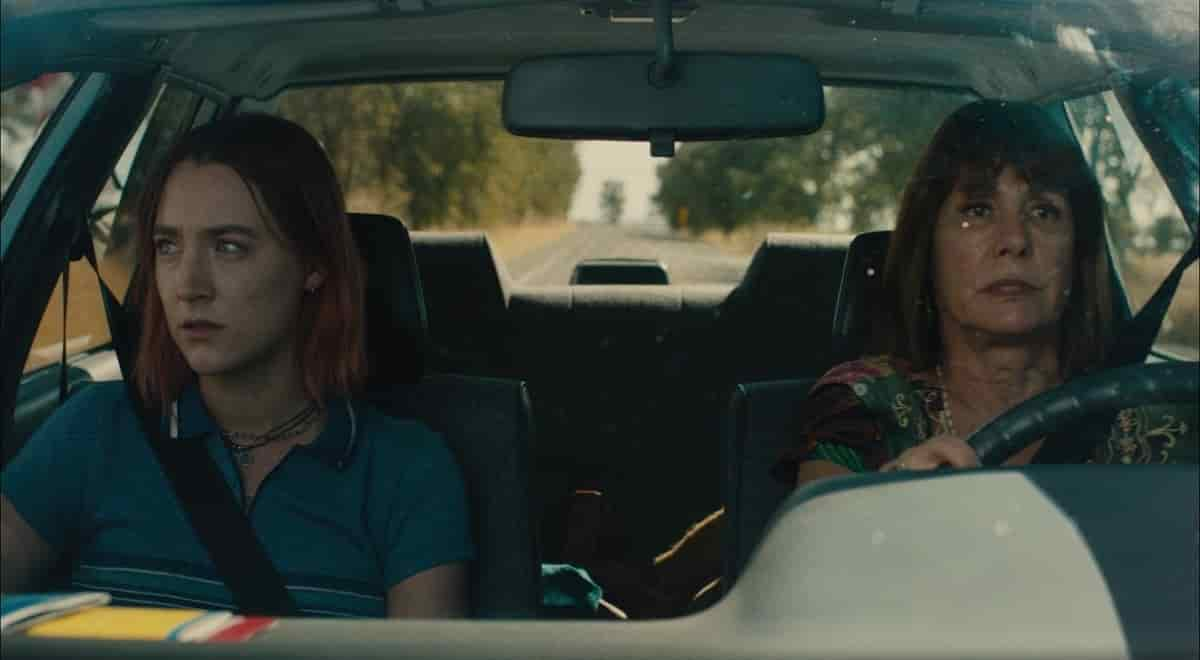
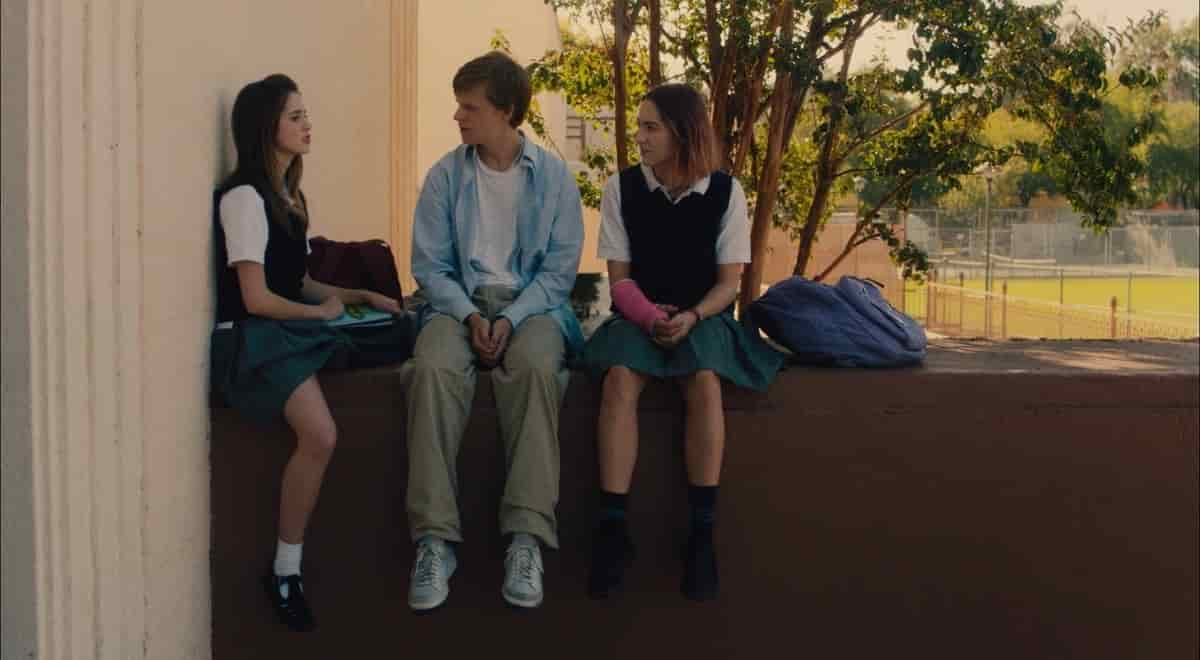
STORY STRUCTURE OF LADY BIRD
SHORTCOMING
If you’ve seen the film Frances Ha, you’ll start to see Greta Gerwig is associated with a type (in Frances Ha as an actress, in Lady Bird as writer and director). This type is a young woman who:
- Has artsy aspirations without the talent to match
- Schemes her way into situations with the sorts of people she wants to mirror
- Makes social mistakes/self-sabotaging decisions
- Is assertive almost to the point of aggression (especially as perceived when it comes from a girl)
- Doesn’t process consequences well
Frances Ha as a character is a softer character than Lady Bird. But for comparison purposes I’m picking a different film altogether—Diablo Cody’s 2011 film Young Adult, starring Charlize Theron as Mavis Gary. Critics and audiences alike found the character of Mavis Gary unlikeable, but not in a cool, antihero way a la Walter White — in an unpleasant ‘why am I wasting time watching this person’ kind of way.
Honestly, I think part of it is that Charlize Theron seeks roles that play down her Amazonian good looks (e.g. Monster) but because of how she looks she’ll always be the pretty girl. Studies have been done on beauty, and once you’re over about a seven out of ten your beauty is no longer beneficial to you. (Outside modelling and certain kinds of acting, I guess.) So part of the audience reaction to Mavis Gary might have been to do with Charlize Theron, and our perception that because she conforms to The Western Beauty Ideal then any other failings are absolutely her own fault.
But the unlikeability of Mavis Gary was definitely also in the writing. Female characters don’t need to be likeable. I doubt Diablo Cody was even trying to make a likeable character in Mavis. I’m sure she wasn’t. The problem is, Mavis isn’t sympathetic, either.
There is a scene in the movie in which Mavis tries to be a trickster character. Bear in mind, audiences love trickster archetypes. Note that her trick fails. Mavis Gary now comes across as a bit simple, and also unkind. My sympathy is with the young woman checking her in, and I don’t think it’s just because I’ve worked in customer service. But Lady Bird is also a trickster who fails.
- She gets caught stealing wafers from church
- She pranks the nun’s car and gets caught.
- She whispers something outrageous during an anti-abortion talk and gets herself suspended from her Catholic school.
- She cracks on she’s living in a flash house and is caught.
The difference is that the audience is already on side with Lady Bird. As my daughter put it, “I don’t like Lady Bird but she’s funny, so I like her.” Lady Bird is a lovable rogue. An interesting aspect of human psychology: Just because someone is rude doesn’t mean we don’t want to be around them. Especially if that person is a fictional character. And in real life: Rude people secretly impress us, even if we don’t really like them.
- The audience is primed to hate self-appointed dobber girls like the one who catches them eating wafers.
- The nun finds the prank funny. The nun obviously likes Lady Bird.
- Most of the audience of this particular film would be sympathetic to Lady Bird’s reaction to the anti-abortion lady, if not to Lady Bird’s way of protesting.
- Lady Bird is caught out lying about her house, but apologises immediately. Her vulnerability is transparent as she asks if they’re still friends. The popular girl looks into her mobile phone and we know this is going to get around. We also understand Lady Bird’s reasons for wanting to appear rich. There is a huge difference between her home and the homes of her private school classmates and most people feel uncomfortable in the company of people vastly more wealthy than ourselves.
Objectively though, the character of Lady Bird is — all things considered — just as self-centred, just as dismissive of people around her and just as rude as Mavis Gary — most of the time. The wonderful thing about writing YA characters is you can legitimately show a number of sides to them as they try to figure out who they are.
Lady Bird is given zingers in her dialogue — the kind of zinger we would like to carry up our sleeves. The audience loves characters who speak the truth, or their own truth, without duplicity.
“Lady Bird. Is that your given name?”
“Yes. I gave it to myself. It was given to me, by me.”
We have also seen Lady Bird throw herself melodramatically from a moving vehicle in order to make a point to her mother. This kind of self-sabotaging slapstick is funny to watch.
She sees the funny side of situations, like when she’s caught by her brother stealing a magazine. The screenwriter has chosen the unexpected reaction here. The more expected reaction is mortification or fear or embarrassment. But no, Lady Bird is an original. She laughs. Later, she laughs when the goody-two-shoes church girl tells her off for eating the wafers. We like characters who drift through a story able to laugh at things. I think this is because we, as audience, are able to see the lighter side from our seats, and this pushes the amused character closer to us, almost breaking the fourth wall. In contrast, Mavis Gary does not have a sense of humour.
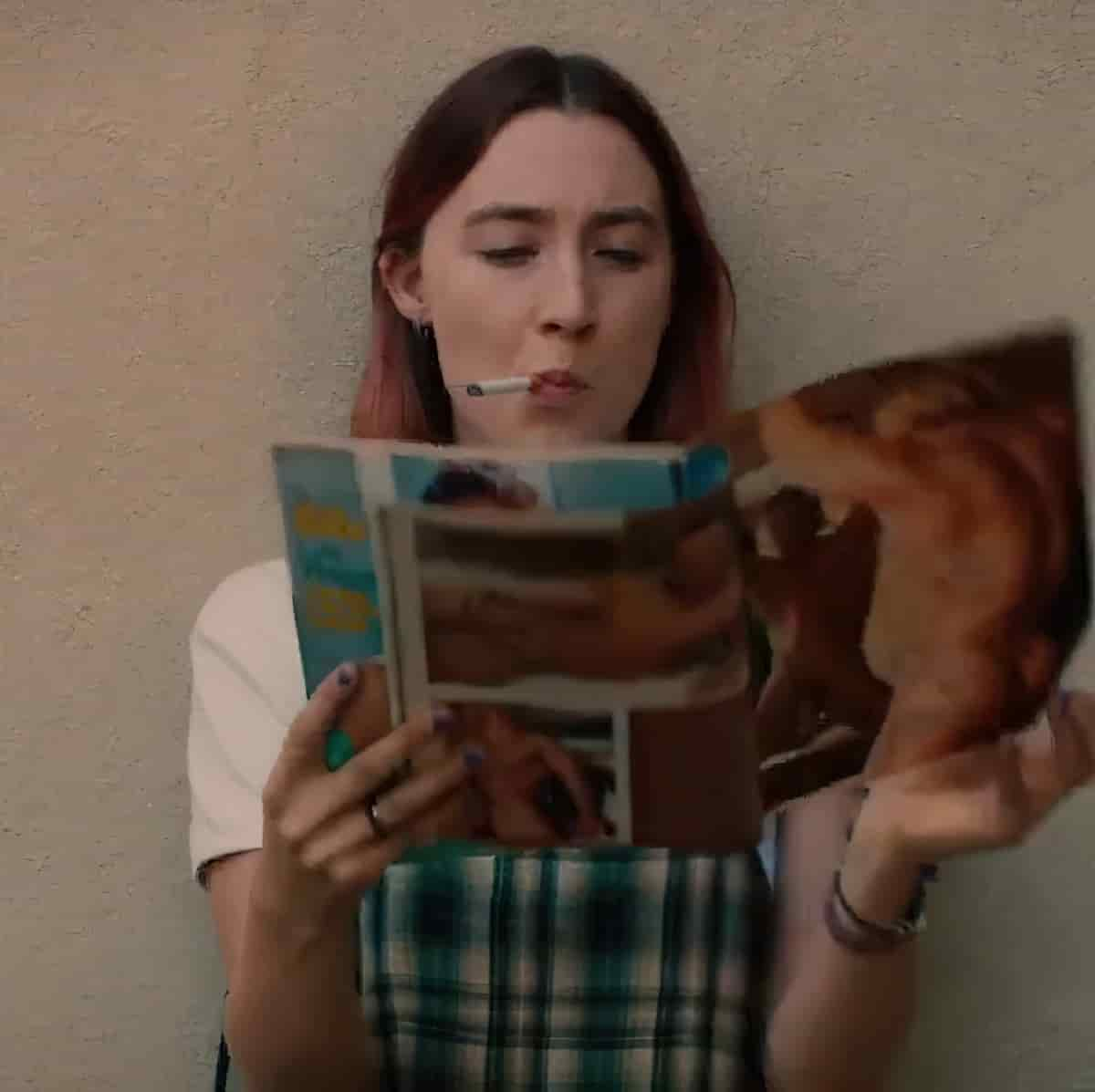
Another reason we’ll happily follow Lady Bird: She knows exactly what she wants and she goes for it, even when she’s nervous. Even when it’s ridiculous. We like characters who know what they want and go for it.
Here she is expressing interest in a boy. Lady Bird doesn’t wait around to be asked.
That particular scene does double duty—she feels misunderstood by her boss who accuses her of flirting. “I wasn’t flirting.” And it’s true. She wasn’t. Flirting is a passive thing that girly-girls do. Lady Bird was expressing directly and assertively interest in a boy and setting up a rendezvous. When characters are misunderstood by other characters, we empathise with the side who is misunderstood. We don’t like Mavis Gary in Young Adult because the other characters peg her correctly and treat her possibly better than she deserves to be treated.
Other characters love Lady Bird. It’s clear her mother loves her very much. Her father loves her in a more demonstrative fashion. Lady Bird’s teachers love her, even after she pranks the nun (harmlessly). I call this the Gone With The Wind trick. We only put up with Scarlett O’Hara because she’s surrounded by people who love her. In contrast, Mavis Gary has no one. The character of Gemma is a mirror character to Lady Bird — Gemma is not supposed to be liked by us. Gemma is the Popular Teenage Girl trope, though she’s written a bit more subtly than most characters of this trope. She is acted beautifully with an absolutely vacant face. In the pool scene it is clear that Gemma doesn’t want for much in life — she just wants her popular high school life to continue along a rich girl track, in the same suburb. As mentioned above, it’s harder to empathise with characters who don’t have a strong desire line. This might be because without a strong desire, characters are boring to watch.
Surrounding your main character with laughable tragic stereotypes is another way to make the main character the likeable one. Lady Bird’s brother and girlfriend are getting into the vegan, hippie movement but their logic doesn’t hold water (at least, for much of the viewing audience).
But this particular story isn’t all about the teenage daughter. This is also the mother’s story. I really felt for Marion McPherson, driving away from the airport, then circling back because she didn’t want her daughter to see her crying. This moment reminded me of the heart-wrenching moment in Richard Linklater’s film Boyhood, where the mother realises that her child’s childhood has come to an end, and that she’ll be entering a new phase of her life as a distant advisor parent rather than as a manager parent.
This is a scene which can only be appreciated by older viewers, I feel, more so if they are older parents. Australian TV personality Amanda Keller describes it beautifully below.
You’ve certainly heard the heart-wrenching insight that there’s always a last time a parent picks up their child. By a certain age the child is too big, which means there’s always an ordinary day when the parent picks up and puts down their child as they have a thousand times before, with no awareness that it was the last time they would do it.
The Last Time Always Happens Now
DESIRE
Lady Bird establishes the Desire Line of our main character very early on — in the opening scene. This diatribe could sound on the nose, but because it’s an argument the scriptwriter gets away with more. (A truism about argument dialogue in fiction.)
The desire for something more, something big, something MAGNIFICENT! is not original to Lady Bird. This is an old desire, seen in classic literature:
Lucy never knew her desires so clearly as after music. She had not really appreciated the clergyman’s wit, nor the suggestive twitterings of Miss Allan. Conversation was tedious; she wanted something big, and she believed that it would have come to her on the windswept platform of an electric tram.
A Room With A View, E.M. Forster
Note that in older classics, the functions of story come much more gradually. Lucy displays no real desire to the reader until the beginning of Chapter Four. Forster’s novel is described on the cover as ‘The tender story of a young girl’s awakening’. (I wouldn’t call a young woman a ‘young’ girl but that’s by the by.) The wanting of Something Big But Don’t Know Quite What Yet is characteristic of coming-of-age stories. (And though I haven’t done a study on it, I suspect it’s especially common with young female characters, because of the cloistered environment they’re brought up in.) It also describes Thelma in Thelma and Louise. The desire to be something else isn’t even necessarily noble.
OPPONENT
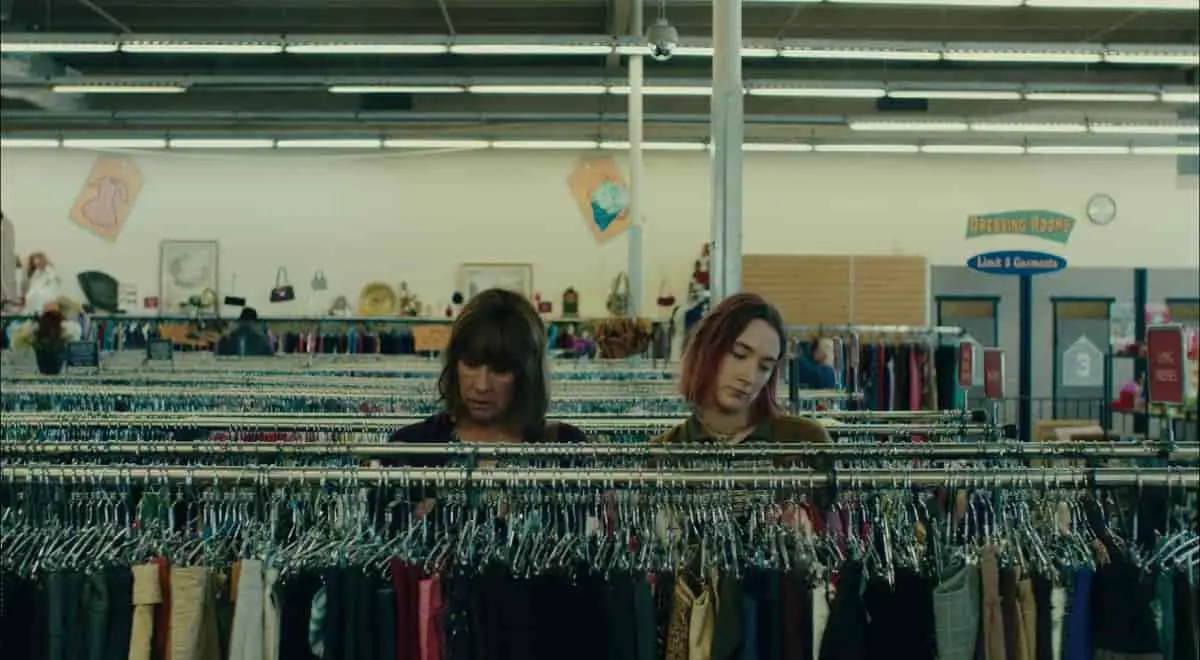
Lady Bird’s mother is her not-so-secret ally opponent — on the surface this mother/daughter relationship is antagonistic, but underneath the mother is wholly supportive. Shouty-arguing juxtaposes tender moments such as lying in bed together, asleep. Marion is wholly justified in being annoyed with her daughter for insisting on going to New York to study. She works so hard as the only income earner and now her husband is taking out a second mortgage on their house, when Lady Bird could have had an education nearby.
Lady Bird finds herself a romantic opponent, which seems to go remarkably smoothly until she realises he’ll never be into her. The next boy also goes well, until it turns out he has maybe lied to her about his virginity. Or maybe Lady Bird imagined an alternate scenario. The latter is probably more likely, because we’ve already seen that Lady Bird is prone to flights of fancy. The post-coital scene works well because Kyle Scheible isn’t being all that unreasonable. I can see the writer has sympathy for his own worldview.
The more interesting peer opposition is between Lady Bird and her best female friend, Julie. This is ultimately a love story between a girl and her best friend and between a girl and her mother. The boys come and go. When they dance together at the end, it is clear that beats from the romantic genre have been overlaid onto the friendship between two girls. Bicker bicker, kiss kiss, only it’s platonic.
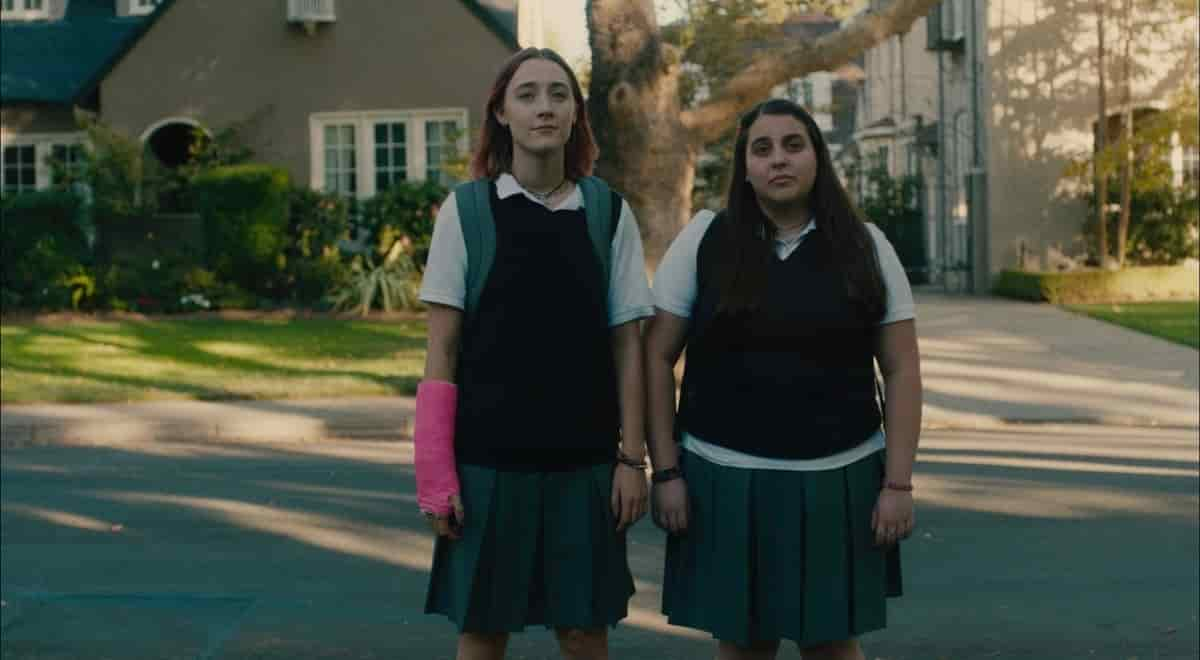
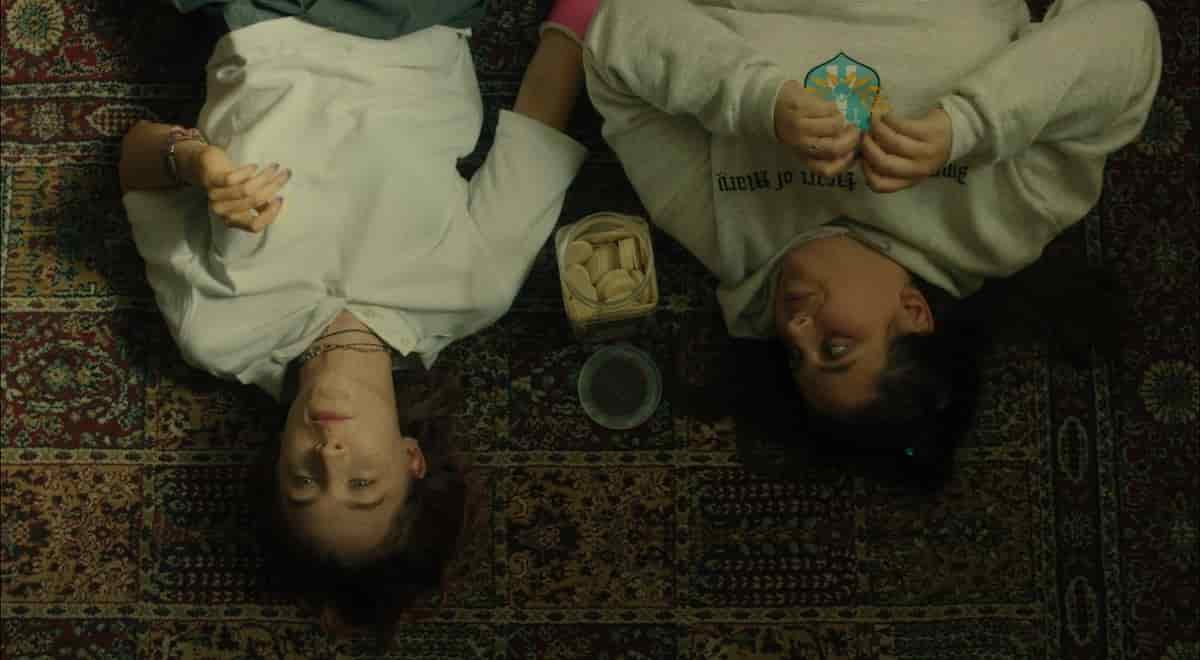
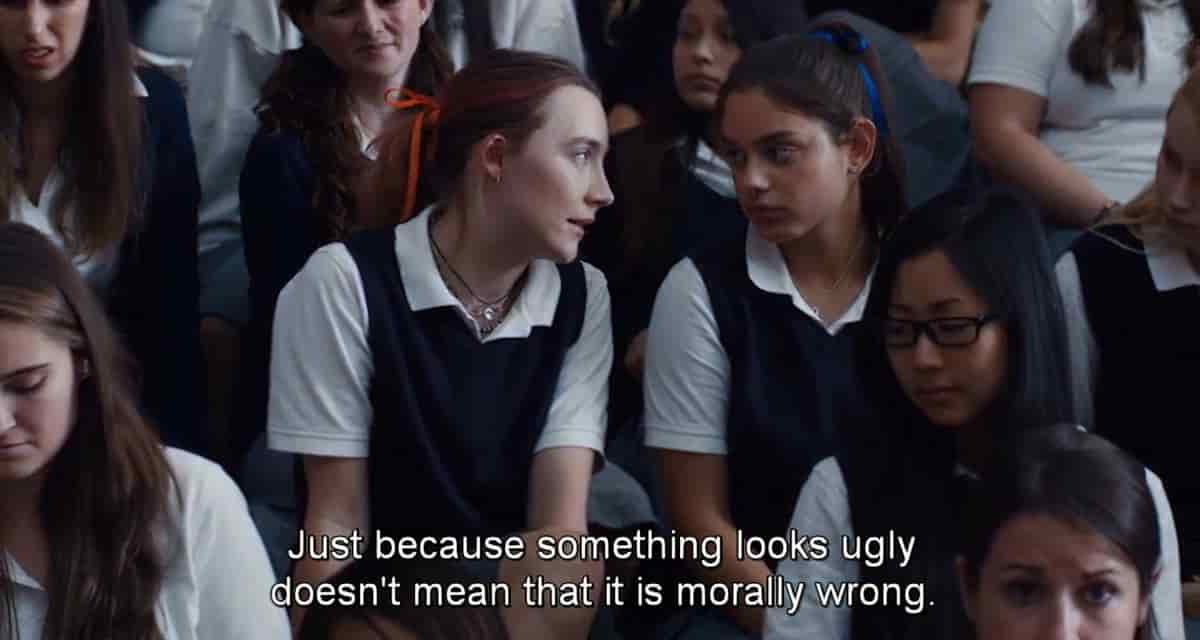
PLAN
The desire mentioned above is no help to the story until your character makes a plan. Lady Bird’s plan is to:
- Do some things to bolster her college applications
- To her this means being in the school production
- Get into one of the best East Coast colleges
- More immediately, her plan is to find a high school boyfriend
- And when that doesn’t work out, her plan is to get with the cool band boyfriend
- In order to do this, she needs to ditch Julie and get in with the popular girl, who knows him.
It’s all of a piece. Unfortunately, as part of this plan to Be Someone, despite coming from ‘the wrong side of the tracks,’ Lady Bird loses herself to her goal. The goal itself is not the problem — her plans to get it are terrible. She’ll need to come to this realisation over the course of the story, and she does.
BIG STRUGGLE
Because this film covers several relationship dynamics, there need to be an equal number of Battle Scenes.
- With the first break up: Walking into the toilet cubicle, followed by crying with Julie in the car
- With the rock band boyfriend: Sitting at the end of the bed, after un-special sex
- With Gemma: In her real kitchen, her lie uncovered
- With Julie: In the school yard, in which Lady Bird accuses the friend’s mother of having fake tits
- With the mother: It’s to pick ‘a’ big struggle scene because every scene between mother and daughter is full of conflict. This is the genius of the screenwriting here — the big big struggle scene is very quiet and contracted. The mother doesn’t say much at all and Lady Bird ends up slamming the car door. This is the scene that leads to the anagnorisis (for the mother), so that’s how I am confident that this is Their Big Battle. Note also that relationships aren’t like movie sex — two characters in a big struggle aren’t going to have their anagnorisis simultaneously. Lady Bird does not have any anagnorisis at the airport. This is not her scene. It’s only later, once her father gives her the mother’s trashed love letters that she realises how much her mother loves her. Speaking of which anagnorises…
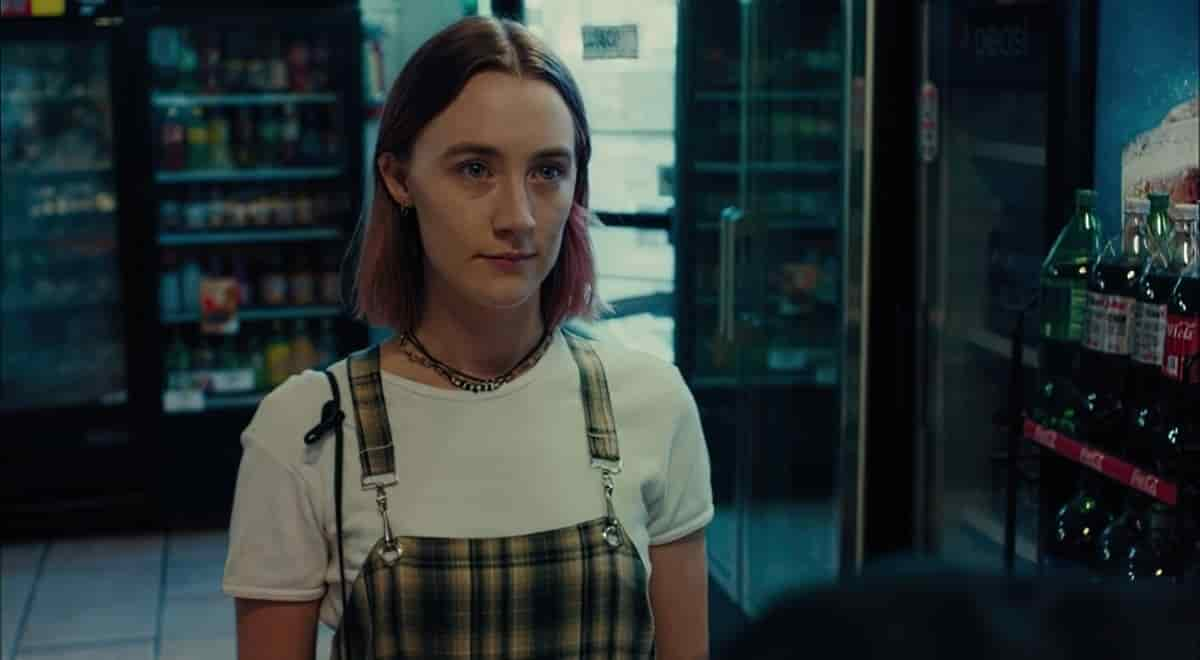
ANAGNORISIS
The film could have ended with Lady Bird leaving at the airport. But it didn’t. If it had ended there, the airport scene would have had to be from Lady Bird’s point of view. Instead, this wrapped up the mother’s character arc. The mother has learned that she needs to let go of her daughter.
Instead, the story follows Lady Bird to New York, where she settles in, slowly, and starts to appreciate some of what she had back in Sacramento. This is symbolised by her wandering into a Catholic church after a real bender of a weekend. Not religious at all in Sacramento (she was only sent to Catholic school because the state school was considered too dangerous), she now embraces some of what the church has to offer. Or perhaps it mostly reminds her of home. Lady Bird’s anagnorisis takes place as she watches the singers in the church. We only know she’s had some sort of epiphany when she calls her mother afterwards. The function of the New York scene sequence is to show Lady Bird’s anagnorisis.
Another coming-of-age film which could have ended in a boy’s hometown but actually followed him as he began his new life in New York: Adventureland. Some reviewers thought the film would have been better without that final sequence. This is not something that has been said of Ladybird. This is because the ending sequence of Adventureland ends with the main character joining his love interest in New York. The audience didn’t need to know whether that relationship was going to work out or not. A feature of teenage-hood is falling in love and then quite often needing to move on from that person, even though things might have worked out if both characters had been thirty and ready to commit. Moreover, there is nothing ironic or surprising about the New York scenes of Adventureland.
This is not the case with Lady Bird. We need to see her make a big mistake, getting herself hospitalised after drinking too much. We do need to see her reclaim her birth name, because that tidies up her character arc — she is comfortable to be herself now. Being away from Sacramento makes her proud to be from (and of) Sacramento. We need to see her wander into the church. Now we know that Lady Bird has fond memories of her high school years.
Here’s what makes Lady Bird rise above other, similar films: Greta Gerwig has pulled off a a story in which both mother and daughter experience a self-revelation, each because of the other. This creates a powerful story with a moving ending.
As The ScreenPrism states, what helps Lady Bird deliver its unique, emotional punch is that it is a story from “the perspective of the teen and the parent learning to let go.” Yes, Marion is over-bearing and often unfair but Lady Bird is selfish and often acts in disregard of those around her. Without one perspective, we wouldn’t be able to see the other in a sympathetic light. Together, both mother and daughter prove that there is no easy way around growing up, no way to ensure that you won’t get hurt and no way to be the best person you can be. It’s all a process of gradual understanding. Gerwig’s Academy Award nominated screenplay uses multiple perspectives to show that just because you feel sad, doesn’t mean that it’s all about you and just because it’s not all about you, doesn’t mean that you can’t feel sad.
Movie Maker
I’ve treated Lady Bird as the main character, but to backtrack, Marion’s character arc is set up more subtly but set up nonetheless. There’s almost a Save The Cat scene in which Marion gives a baby present to a work colleague who has just become a new father. Later, in the clothing store, she comments on some other acquaintance’s new baby (or perhaps it’s the same baby). What’s the interest with babies? Babies are so full of potential. When you have a new baby, that baby could be anyone. Marion is losing her younger baby. Her interest in other people’s says a lot about her mindset. She still wants to mother. She makes eggs for Lady Bird who ungratefully complains they’re undercooked. “Make your own fucking eggs, then,” Marion says. She wants to mother, but it’s now unappreciated. This is something all parents go through. It’s highly relatable.
NEW SITUATION
We know Lady Bird is going to be okay in New York. I suspect she’ll be really proud of coming from Sacramento after a little while, though the previous night she lied that she came from San Francisco, repeating an old pattern.
Her relationship with her mother will improve with geographical distance between them, but whenever she visits home for special occasions they will continue in their old, established dynamic of bickering I bet. Lady Bird might even return to Sacramento after she graduates. I hope she did!
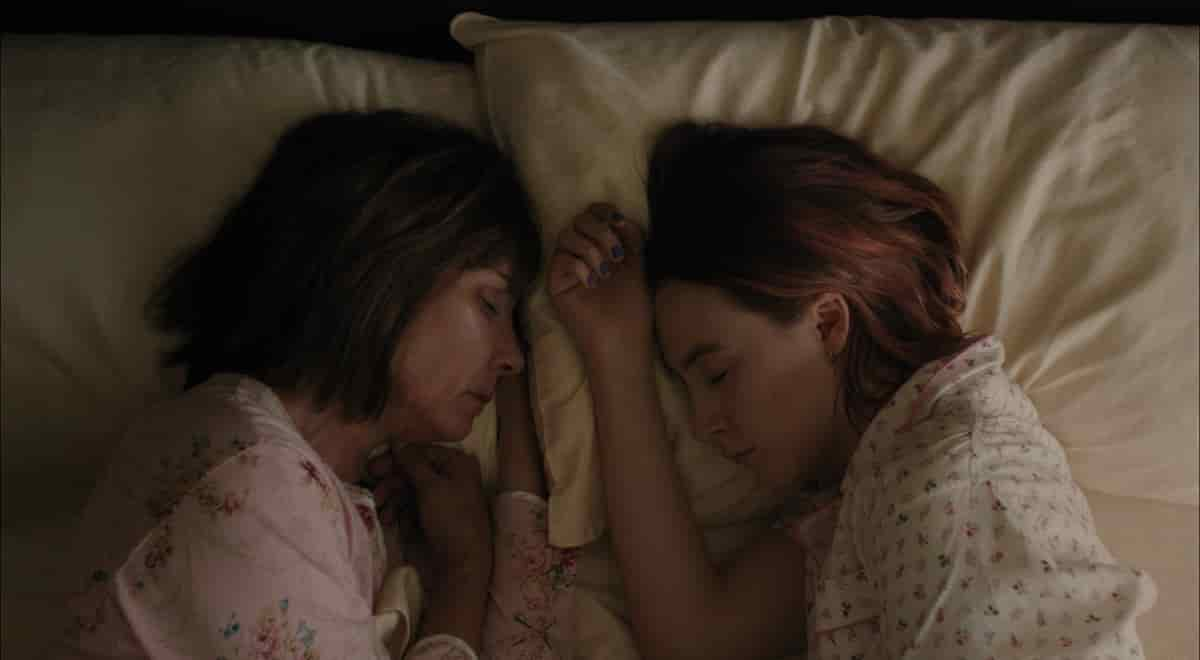
FURTHER READING
Matt Bird’s Ultimate Story Checklist for Ladybird
